calsfoundation@cals.org
Menifee (Conway County)
| Latitude and Longitude: | 35º08’54″N 092º33’15″W |
| Elevation: | 322 feet |
| Area: | 2.27 square miles (2020 Census) |
| Population: | 274 (2020 Census) |
| Incorporation Date: | March 17, 1966 |
Historical Population as per the U.S. Census:
|
1810 |
1820 |
1830 |
1840 |
1850 |
1860 |
1870 |
1880 |
1890 |
1900 |
|
– |
– |
– |
– |
– |
– |
– |
– |
– |
– |
|
1910 |
1920 |
1930 |
1940 |
1950 |
1960 |
1970 |
1980 |
1990 |
2000 |
|
– |
– |
– |
– |
– |
– |
251 |
368 |
355 |
311 |
|
2010 |
2020 |
|
|
|
|
|
|
|
|
|
302 |
274 |
|
|
|
|
|
|
|
|
The town of Menifee has its origins in the 1820s when Dr. Nimrod P. Menifee bought property west of Cadron Creek and along the Arkansas River. The location was adjacent to the Cadron Settlement, once considered as the site for the capital of the new Arkansas Territory and for the seat of Pulaski County. After Little Rock (Pulaski County) was designated the territorial capital, Cadron declined in importance. However, the settlement on the western side of Cadron Creek developed and prospered as the Menifee plantation. The post–Civil War era created the community that continues into the twenty-first century as an incorporated city.
Menifee and his son, Dr. Lewis Menifee, organized a large plantation in addition to a river crossing known as Menifee Ferry. The Menifee family provided the right-of-way for the development of the railroad, and when completed in 1873, the designated stop and post office were named in honor of Dr. Nimrod Menifee.
By the early 1890s, the town of Menifee was recognized as an important model for an African-American community, as described in an article published in 1896 by the Freeman newspaper of Indianapolis, Indiana. Dr. G. W. McNeice, the community doctor, was mentioned as the first “colored” physician licensed in Conway County. There were several “wealthy families and business houses” noted in the area. It was also reported that a school of significant reputation was in operation.
Howard Township, composed of the Menifee and neighboring Plumerville (Conway County) areas, grew substantially in the period from 1870 to 1890 as a result of significant migration of black families from states east of the Mississippi River. The black population in Conway County was 7.8 percent in 1870, 25 percent in 1880, and 39.4 percent in 1890. Most of these increases were found in Howard Township, where cotton farming operations provided work and sharecropping opportunities.
As did most communities, Menifee suffered greatly during the Great Depression and lost much of its population. In the aftermath of World War II, there was less demand for farm labor, which sent much of the younger population to other areas. The community stabilized and developed its base as a regional provider of minority education. The East Side School District had been established in 1919, its growth the result of the consolidation of thirteen black school districts in the county. While funding was traditionally substandard, quality opportunities for both elementary and secondary education were provided. Minority students from rural Conway County were transported, often across several school district lines, to Menifee and the East Side School District.
A tornado struck the area on May 6, 1960, killing local resident Ora Oliver. One witness explained that “every business and residence was either completely destroyed or damaged very severely.” Menifee began to gravitate toward a new portion of Arkansas Highway 64 that opened in 1961 and essentially bypassed the established Menifee community. (The old highway—Railroad Avenue—had been prone to seasonal flooding.) The new highway-centered community highway that included the school complex, a post office, new businesses, and many new homes.
As the civil rights movement and school desegregation brought significant changes to the cultural foundation of the area, the East Side School District, under the leadership of Superintendent Frank Smith, was recognized as a valuable resource. Graduates who were successful in commerce, healthcare, and law provided a degree of satisfaction that supported the district well into 1970s. However, in 1979, a Federal District Court order was affirmed consolidating the Morrilton (Conway County), Plumerville, and Menifee school districts into the South Conway County School District. This action brought an end to the segregated dual educational system that brought both hardship and success to the Menifee community.
Also during the 1960s, the community recognized the need to become an incorporated city. Programs that were being developed to create community infrastructure were available only to qualified cities. In 1965, Menifee was incorporated, with popular superintendent Frank Smith as the first mayor. Basic community services—such as street improvements, a city water system, a parks and recreation program, police protection, and a local district court—are well established.
The population in 2010 was 302, and the population of the Menifee postal area is becoming more racially diverse. Employment in the area is heavily related to the lumber and wood products industry, which employs between 200 and 250 persons in eight locations. Pine Crest is the largest employer, with about seventy-five employees; a timber company, it handles logs and distributes raw pine byproducts that are used in a variety of products.
The Menifee High School Gymnasium, located on the northwestern corner of North Park and East Mustang streets in Menifee, was built in 1938 and listed on the National Register of Historic Places on June 6, 2002.
For additional information:
Conway County, Arkansas: Our Home, Our Land, Our People. Little Rock: Historical Publications of Arkansas, 1992.
Matkin-Rawn, Story. “‘The Grandfathers’: Lewis Wade Jones’ Profile of Menifee, Arkansas.” Arkansas Historical Quarterly 72 (Spring 2013): 42–58.
Smith v. Board of Education of Morrilton School District No. 32. Open Jurist. https://openjurist.org/365/f2d/770/smith-v-board-of-education-of-morrilton-school-district-no-h-b-w-o (accessed July 20, 2022).
Larry Taylor
Springfield, Arkansas
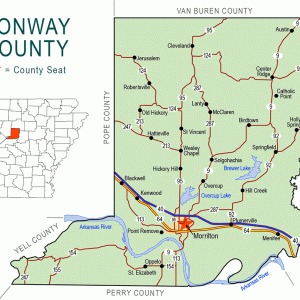 Conway County Map
Conway County Map  Green Bay Packaging Company
Green Bay Packaging Company 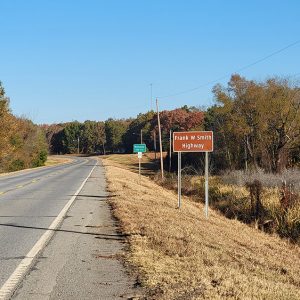 Entering Menifee
Entering Menifee  Menifee
Menifee 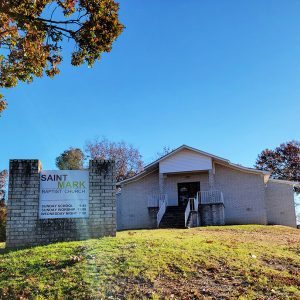 Menifee Church
Menifee Church  Menifee Church
Menifee Church 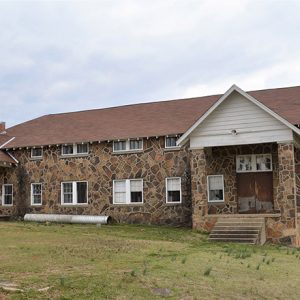 Menifee High School Gymnasium
Menifee High School Gymnasium 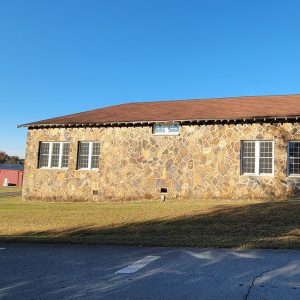 Menifee High School Gymnasium (Rear view)
Menifee High School Gymnasium (Rear view) 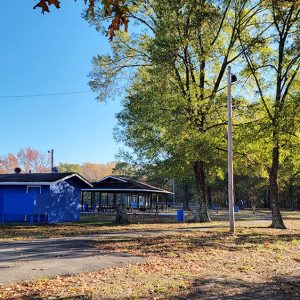 Menifee Park
Menifee Park  Menifee Post Office
Menifee Post Office  Menifee Street View
Menifee Street View 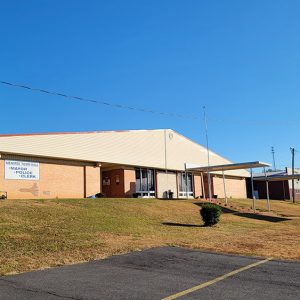 Menifee Town Hall
Menifee Town Hall  Menifee Water Towers
Menifee Water Towers 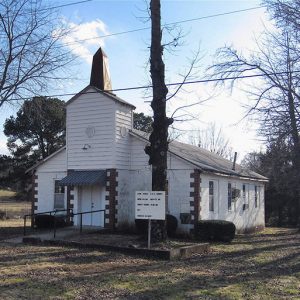 Zion Temple CME
Zion Temple CME 



Comments
No comments on this entry yet.